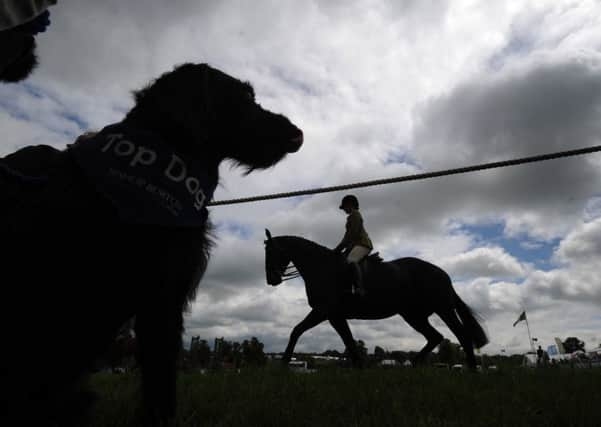Country & Coast: Horse riders forced to play long game to protect routes


On Ordnance Survey maps you can tell bridleways from footpaths by their longer dashes, and on the ground they are usually identifiable by the presence of blue waymark arrows.
But there is also another network of routes called “unrecorded tracks”. They have no official status despite many being in regular use by walkers and riders. And in a decade these tracks will be lost forever unless they are registered as rights of way on the so-called definitive maps compiled by local authorities.
Advertisement
Hide AdAdvertisement
Hide AdDoing this is a complicated and long drawn-out process but some walkers, runners, riders and cyclists in Calderdale and Kirklees have got stuck in with mixed results.
Sarah Whiteley, who is chairman of the Calderdale Council Local Access Forum and keeps horses in the Spen Valley, began registering routes more than five years ago. “I’m still on with it,” she sighs. “Nothing happens quickly.”
According to the Countryside and Rights of Way (CROW) Act any footpath and bridleway which came into existence before 1949 and wasn’t formally recorded would be legally extinguished in 2026. Sarah fears this will lead to the loss of thousands of routes.
Unrecorded tracks are used by two million horse riders in the UK, but every year they find many of them blocked or have disappeared altogether because of housing developments and new roads.
Advertisement
Hide AdAdvertisement
Hide AdSarah’s campaign started when she found that part of a favourite riding route in the lower Calder Valley near Clifton had been covered with tarmac and new houses.
“I was shocked by this. It was being used by other riders, but it seems that unless you go through a lot of red tape and prove a path has been in use as a bridleway for 20 years you can eventually lose the right to ride on it.”
The problem faced by many riders like Sarah is that they tend to stick to the area around the field or stabling at which their horse is kept, and when an unrecorded track in that locality is withdrawn or blocked it seriously reduces their choice of routes.
The only actual upgrade from unrecorded track to bridleway Sarah knows of in the last 20 years was at Southowram, and other riders have reported an occasional upgrade in their areas. She doesn’t blame local authorities like Calderdale for being so slow, she says, because they haven’t been given the manpower or funds to do the paperwork.
Advertisement
Hide AdAdvertisement
Hide Ad“But when I look at a track I know as Pump Lane, the application to make this a bridleway on the council’s definitive map was originally submitted in 1998,” she says. “My patience is wearing a bit thin.”
She believes horse riders are discriminated against by councils, who seem to spend a lot more money and time on creating better routes for cyclists.